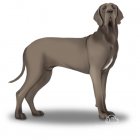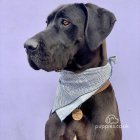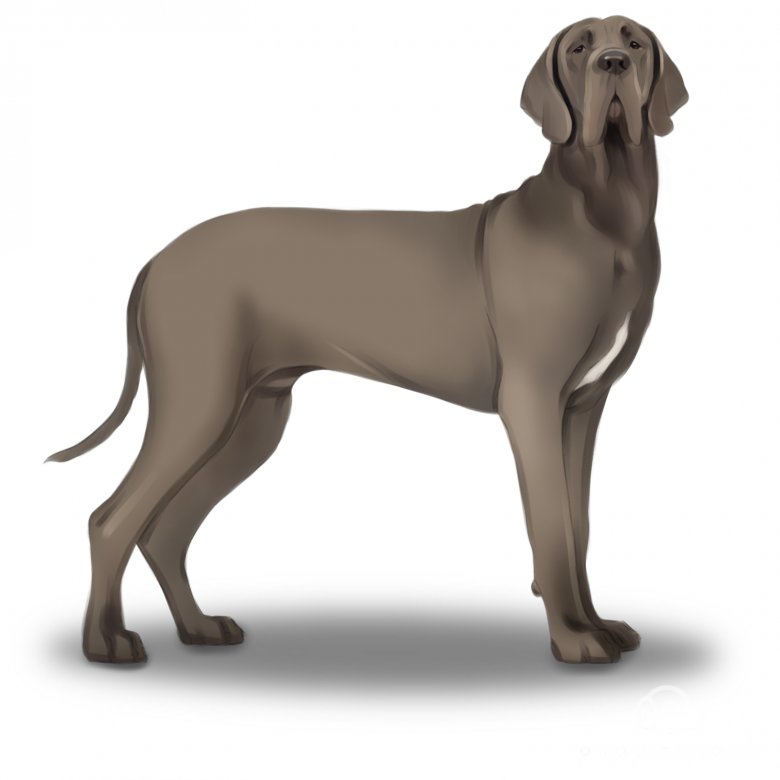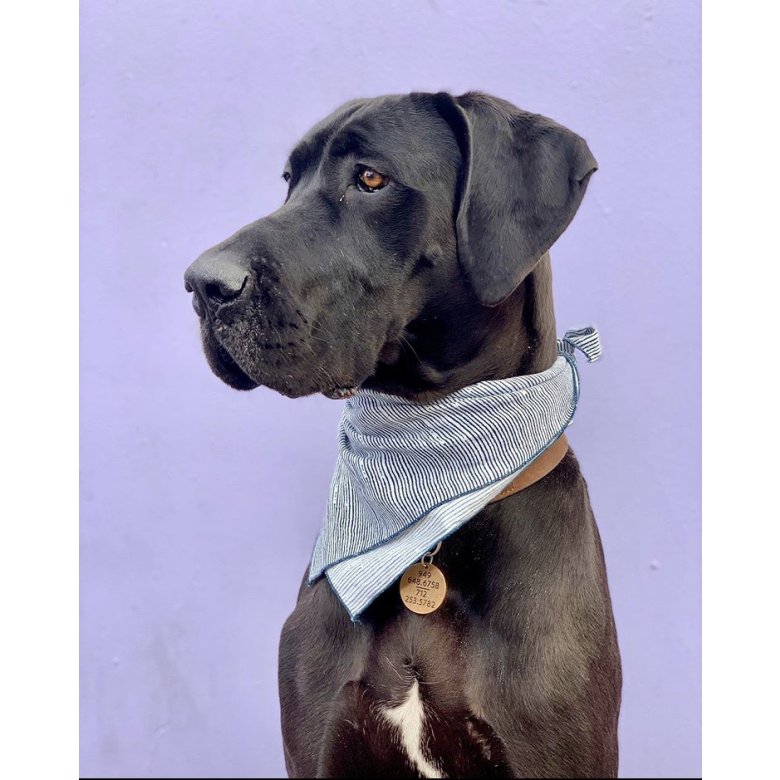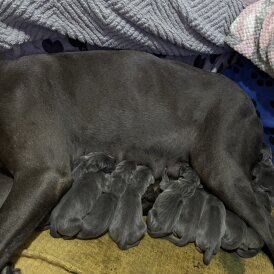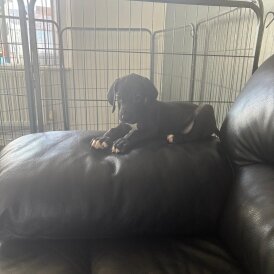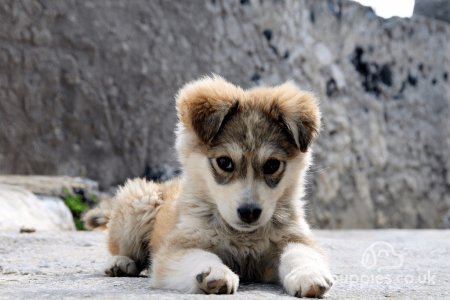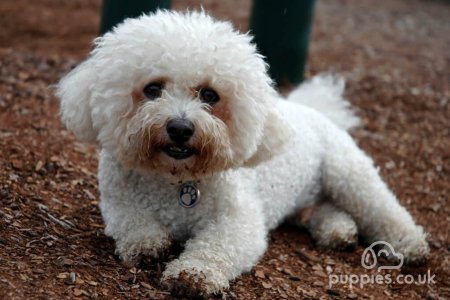Why Great Dane Puppies are great
As some will know, Scooby-Doo from the cartoon is a Great Dane. These dogs are wonderful, loyal and affectionate animals with plenty playfulness and goofiness in their nature. As far as ‘Gentle Giants’ go, these sensitive dogs are up there on the list. However, their gentle demeanour does not take away from their impressive appearance. They may be imposing to look at, but their affection shines through. The tallest dog ever was a Great Dane, measuring a whopping 112cm at the withers. Some highlights:
Loyal: Great Dane puppies are known to be extremely loyal and affectionate with their humans.
Playful: They love to entertain and be entertained. That with their slight goofiness makes for a funny combination.
Coats: Their coat does not shed excessively, and grooming is not at all high maintenance.
Activity: They require a lot of exercise, but if their owner or owners are active, then they are excellent exercise partners.
Quiet: They are not vocal, and do not make unnecessary noise often.
Things to consider when looking at Great Dane Puppies for Sale
However common or rare for each individual dog, the breed has a bit of a stubborn streak at times. Additionally, they do have a prey drive which makes it important to keep your dog on a lead in certain places lest they take off. Be aware that a dog this size can even cause accidental damage with a wag of the tail. Some downsides to the Great Dane:
Size: Great Dane puppies are extremely large. Consequently, small houses or apartments, as well as properties without large spaces outside, are a no-go.
Separation Anxiety: They are notably bad at being left alone – be ready to accommodate this.
Drool: Great Dane puppies are known to drool excessively.
Health: With a shorter life expectancy and their health issues, vet bills and shorter life are expected.
Expensive: From insurance to food, the cost to keep a Great Dane puppy is significant.
History of Great Dane Puppies
There are drawings of dogs that look like Great Danes on Egyptian monuments that date all the way back to 3000 B.C. However, enthusiasts of the breed agree that the breed was officially developed in the 17th and 18th Century in Germany. There is a little confusion as the name suggests that the breed is Danish – but the one that we know today was not developed in Denmark. Bred to be hunting dogs, they have athleticism and spark. When kept by Noblemen, Great Dane puppies were kept in Great Halls, rather than in kennels.
Appearance
How big is the Great Dane Puppy?
A fully-grown male Great Dane puppy measures 76-81cm at the withers. A fully-grown female Great Dane puppy measures 71-76cm at the withers.
How heavy is a Great Dane Puppy?
A fully-grown male Great Dane puppy weighs 54-62kg. A fully-grown female Great Dane puppy weighs 46-54kg.
What Colour is the Great Dane Puppy?
The Kennel discusses colours as follows:
A striped pattern, a ground colour from lightest buff to deepest orange – with stripes always being black.
Varies from lightest buff to deepest orange, potentially with darker shadings on head and ears.
Black
Blue (varies from light grey to deep slate).
This is Black & White. White should largely feature on the muzzle, collar, chest, some parts of legs and the tip of the tail. The rest should all be black.
Pure white underground with all black or all blue patches.
Temperament
Do Great Dane Puppies make good guard dogs?
Great Dane puppies are not good guard dogs, as they are not aggressive with unwanted visitors. However, they are great watchdogs. They will always alert their humans to unwanted visitors. Not just that, but their imposing appearance adds to their barking.
Do Great Dane Puppies bark a lot?
It is seldom the case that a Great Dane puppy will bark without reason. They are generally quite quiet.
Are Great Dane Puppies easy to train?
Great Dane puppies are extremely loyal, but they grow fast. It is advised that this breed is not ideal for first-time owners. With that said, when handled correctly, taking into consideration the needs of the breed, their intellect can lead to the training process being quite straightforward. Harsh training is never really advised, but especially not in this case, as they are very sensitive.
Are Great Dane Puppies playful?
This breed has a lot of energy which must be used up. They will almost always be keen to join in any time that exercise is proposed.
Are Great Dane Puppies good with children?
A Great Dane puppy is known to be very affectionate and affable with children. However, consider the sheer size of this breed. Supervision is essential as any accidents during playtime can frighten them or the children if you can’t be there to reassure or protect.
Are Great Dane Puppies good with other pets?
These dogs are very friendly and seldom show any aggression towards other pets. It should be noted though that the Great Dane puppy has a fairly high prey drive. Consequently, early socialisation should be done with other animals – especially with smaller animals.
Can I leave a Great Dane Puppy Alone?
Great Dane puppies have an extremely close attachment to their humans. However, this means that they are very prone to Separation Anxiety in the event of them being left alone. It is advised in this case that this breed is best in a household that either has someone working from home, or a house with someone there with the dog always. Otherwise, they may be destructive to relieve stress. With their size, that is significant.
Do Great Dane Puppies like water?
This breed loves to swim, especially in hot weather. Obviously take care if the dog is off lead when you are near dangerous looking areas of water. Their large size does not necessarily mean that they are safe.
Health
How long do Great Dane Puppies live?
Average life expectancy for a Great Dane puppy is 8-10 years.
How much exercise does a Great Dane Puppy need?
Great Dane puppies require up to 2 hours of exercise a day. They need a lot of space to move around at home. However, taking them on walks will be one of their favourite activities. Be sure not to over-exercise a Great Dane puppy as they are growing, as they may develop issues in their joints. A general rule of thumb is to keep overexertion and strenuous activity away until they are 18 months old.
What are Great Dane Puppies Common health issues?
The Great Dane puppy is susceptible to a few health issues. If you are looking to get this breed, please be sure to familiarise yourself with the following:
Care
How much space do I need for a Great Dane Puppy?
A medium-sized garden or larger shall suffice. Be sure that the boundaries of this garden are safe and secure. Allow the Great Dane puppy to get plenty of exercise outside. Feel free to run around with them too. As far as houses go, they are not suitable for apartments or small spaces.
What should I feed my Great Dane Puppy?
The amount required by a Great Dane puppy varies due to both weight and activity. An inactive 46kg female requires 634g daily, while a male weighing 62kg who is active requires 877g. It is advised to break the feeding up into 3 or 4 meals a day. Ensure that this is good quality food.
How much grooming do Great Dane Puppies need?
The coat of a Great Dane puppy is short and close. As a result, a weekly brush just to keep the dog tidy and to gather some shed hair is enough.
Do Great Dane Puppies shed?
Great Dane puppies have a moderate shed all year, particularly during the Spring.
Average costs
How much does it cost to keep a Great Dane Puppy?
As a rough guide in pricing: Cost to buy: Around £1000 for a well-bred Great Dane puppy. Other costs (Vet, Food etc): Cost to keep a Great Dane puppy, including food and insurance is anything from £120 to £180 a month.
Specific Buying Guide
You can read our general buying guide here (/advice-on-buying-a-puppy/), with the most important thing being going to view your Great Dane Puppy, seeing the puppy with its mother, and checking the quality of the breeder. More specifically, here is some Great Dane puppy buying advice:
Some breeding inside the Great Dane breed increases the risk of a dog carrying the gene causing deafness, blindness and skin problems. Be sure that care is taken, leave the breeding to a reputable breeder.
Great Dane puppies are extremely popular and can be bred by people who just want to make money. Please be sure to keep it to good salespeople whenever possible.
Other reading, Adopting Great Dane Puppies and Rescue Organisations
A big thank you to the following sources who helped to shape this article:
http://www.vetstreet.com/dogs/great-dane
https://www.daneline.co.uk/
https://www.thekennelclub.org.uk/search/breeds-a-to-z/breeds/working/great-dane/
https://www.akc.org/dog-breeds/great-dane/






